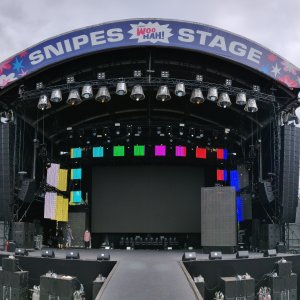Smart Circular Bridge
We are proud to announce that this year our project application Smart Circular Bridge for the European Interreg NWE (North West Europe) organization has finally been approved! In March 2020, we held our on-line Kick-Off video meetings with all partners.
TU/e, with our chair Innovative Structural Design, is the lead partner in this quite large research and development project with a total budget of 6,8 Million euro. Together with a total of fourteen project partners from Belgium, France, Germany and the Netherlands, we will research and develop smart circular bridges, made from natural fibers and bio-resins. During the project, a total of three demonstration bridges will be realized in the Netherlands and Germany. The first bridge to be realized will be in Almere, on the Floriade Expo. It will open, hopefully in our post-corona Covid-19 era, in 2022, but the bridge is to be installed in 2021. By using a continuous Structural Health Monitoring system combined with optical glass fiber sensors, as well as combining this with other environmental data, temperature, moisture, etc. we will develop a Smart Circular bio-composite Bridge. The first bridge in Almere will provide us with a lot of in situ data on how this new bio-composite material and the bridge structure is behaving in all “real live” circumstances. (Instead of our Dutch RIVM (limited Covid19 testing) we go for “continuously testing” 😊)
Based on the need to minimize our impact on our environment, we have to make a shift towards using much more natural, renewable materials. Despite an increasing market demand, the construction industry (one of the largest users of fossil materials) remains very hesitant to implement new natural materials. The reason is that the material properties of these ‘bio-materials”, especially time-related degradation properties, are insufficiently known to fully guarantee safe use for a sufficiently long time.
At both the TU/e (we will have three Ph.D.’s), KU Leuven (two Ph.D.’s) and at the Avans University for Applied Sciences we will do a lot of development, modeling, and testing. We will perform material research on accelerated composite material degradation, fatigue under different moisture conditions, combined with other tests, thus simulating accelerated material weathering. Also, Lineo, Ecotechnilin, a French natural fiber producer, will assist in this. Material behavior will be modeled as closely as possible for use in our Final Element Analysis. Our goal is to come to a combined degradation model of the composite biomaterial.
At the same time, we will further develop our Structural Health Monitoring system. Partners who collaborate on this project are, for example:
- Concrefy, they monitor concrete curing using sensors in the material and have experience in continuous structural asset management systems. They monitor structures online, from all over the world;
- VUB, University of Brussels, one Ph.D;
- The Belgium companies 24SEA, who is very proficient in data analysis, and that continuously monitors all Belgium off-shore Wind-park foundations;
- Com&Sens, skilled in Composite Sensing.
By combining data from in-situ behavior, material laboratory tests, modeling degradation behavior, and detecting and determining boundaries of the maximum allowable material degradation, the Structural Health Monitoring system will be used to generate early warnings in case pre-set limits should be reached.
The goal of the project is to be able to guarantee, for a large part, the minimum required levels of structural safety by the structural Health Monitoring system, preferably, of course, at all times. For these new materials, it is (any way at present) not fully possible to follow our much more common, “semi-probabilistic Eurocode” limit state design. This approach checks structural safety only in the design stage, by using a preset Service Life and partial factors on materials (that have come from decades of experience and material testing). So, to overcome this lack of long-term knowledge on these new materials, further testing is needed but also has to be combined with the constant Structural Health Monitoring. The goal is to make the bridges smart by making them “self-sensing”.
Apart from the already mentioned partners also FibreCore Europe, a producer of “traditional” Composite bridges, is a very important partner. FibreCore has a lot of experience and was also involved in the upgrade of CUR 96: The Dutch recommended code for composite structures. Contractor VolkerWessels (Infra Competence Centre) will assist in project management but also give its expertise in contracting and guaranties.
Of course, by now, we know that all problems are never just technical problems. Stakeholder acceptance is also an extremely important part of any new solutions we come up with. For this, a separate Work Package will look at acceptance by Approving Authorities, but also at Client-producer relationships. For both, guidelines will be delivered. In this, the cities of Almere, Bergen op Zoom and Gemeinde Ilsfeld (Germany) are full project partners. Here also the University of Stuttgart ITKE will assist the research and design of Smart Circular bridges.
A separate part of the material research will look at the End of Live of the Smart Circular bridges by researching in what way materials can be recovered and reused in such a way that it minimizes impact (Life Cycle Assessments) and to come to full circular solutions. Last but not least, we should mention the full project partner and German-based Pröesler Kommunikation. They will assist the project regarding our communication, organizing events and symposia, and thus substantially contributing to the long-term effect of this project.
Obviously, wherever we can, we will involve students in our designs, research, and education. So, whatever happens, I am sure this will not be the last time you here from us!!
Rijk Blok




